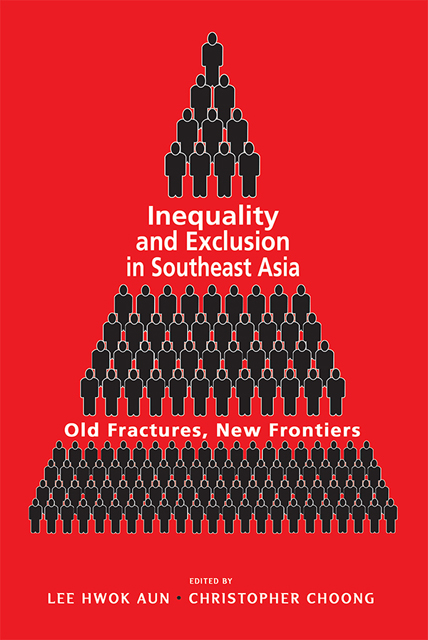Book contents
- Frontmatter
- Contents
- List of Tables
- List of Figures
- Acknowledgements
- About the Contributors
- 1 Introduction: Inequality and Exclusion in Southeast Asia
- 2 Cambodia’s Experiences in Addressing Inequality
- 3 Inequality and Exclusion in Post-Soeharto Indonesia
- 4 Inequality and Exclusion in Malaysia: Macro Trends, Labour Market Dynamics and Gender Dimensions
- 5 Inequality in Myanmar: Structural Change, Policy Outcomes and Gender Dimensions
- 6 Structural Inequality in the Philippines: Oligarchy, Economic Transformation and Current Challenges to Development
- 7 Inequality and the Social Compact in Singapore: Macro Trends vs Lived Inequalities
- 8 Inequality in Thailand: Income, Socio-economic and Wealth Dimensions
- 9 Trends and Drivers of Inequality in Vietnam
- 10 Conclusion: Old Fractures and New Frontiers
- Index
4 - Inequality and Exclusion in Malaysia: Macro Trends, Labour Market Dynamics and Gender Dimensions
Published online by Cambridge University Press: 01 September 2023
- Frontmatter
- Contents
- List of Tables
- List of Figures
- Acknowledgements
- About the Contributors
- 1 Introduction: Inequality and Exclusion in Southeast Asia
- 2 Cambodia’s Experiences in Addressing Inequality
- 3 Inequality and Exclusion in Post-Soeharto Indonesia
- 4 Inequality and Exclusion in Malaysia: Macro Trends, Labour Market Dynamics and Gender Dimensions
- 5 Inequality in Myanmar: Structural Change, Policy Outcomes and Gender Dimensions
- 6 Structural Inequality in the Philippines: Oligarchy, Economic Transformation and Current Challenges to Development
- 7 Inequality and the Social Compact in Singapore: Macro Trends vs Lived Inequalities
- 8 Inequality in Thailand: Income, Socio-economic and Wealth Dimensions
- 9 Trends and Drivers of Inequality in Vietnam
- 10 Conclusion: Old Fractures and New Frontiers
- Index
Summary
INEQUALITY IN MALAYSIA: CLEAR PRIORITIES AND UNSETTLED QUESTIONS
Malaysia is generally regarded a success story in reducing income inequality, especially between ethnic groups, while sustaining growth and eradicating poverty over the long term. In recent years, the country has also increased attention to national inequality—particularly, by emphasizing the poorest 40 per cent of households (or B40, for “Bottom 40”) as beneficiaries of more inclusive economic growth and social policy—and by addressing gender disparities in opportunity, participation and mobility. The policy priority is premised on an assessment that inequality has remained high, that the lower income segments are being left behind, and that women face barriers to equal participation and remuneration.
Popular discourses on inequality in Malaysia have also, for the past decade and into the present, maintained a broad consensus that inequality has increased, or at least stayed high—with particular emphasis on class-based disparities within ethnic groups. Such diagnoses and outlooks draw on the structural features of Malaysia’s political economy, anecdotal observations and public perceptions: masses struggling to cope with cost of living while the fortunes of the elites appear to be burgeoning, concentration of the benefits of growth at the top alongside sluggish employment conditions, and real wage stagnation for the working classes. Official statistics, however, paint an opposite picture of rapidly declining inequality.
This chapter proceeds in three main segments. First, we revisit household income inequality, examining the plausibility of the official account and extracting new insights from the data. The government’s calculation of Malaysia’s household income Gini coefficient, based on national survey data, has registered a declining trend from 2004 to 2016, far in excess of regional neighbours and even global comparator countries. This is on the back of rapid income growth for the bottom 40 per cent and slower rates of increase for the top 20 per cent. Intraethnic inequalities have reached all-time lows. Perplexingly, inequality rose between 2016 and 2019, based on the latest update. Furthermore, inequality drops precipitously in a few intervals, but these intervals do not correspond with momentous shocks, structural change or policy reforms that can explain the findings.
- Type
- Chapter
- Information
- Inequality and Exclusion in Southeast AsiaOld Fractures, New Frontiers, pp. 87 - 132Publisher: ISEAS–Yusof Ishak InstituteFirst published in: 2023



